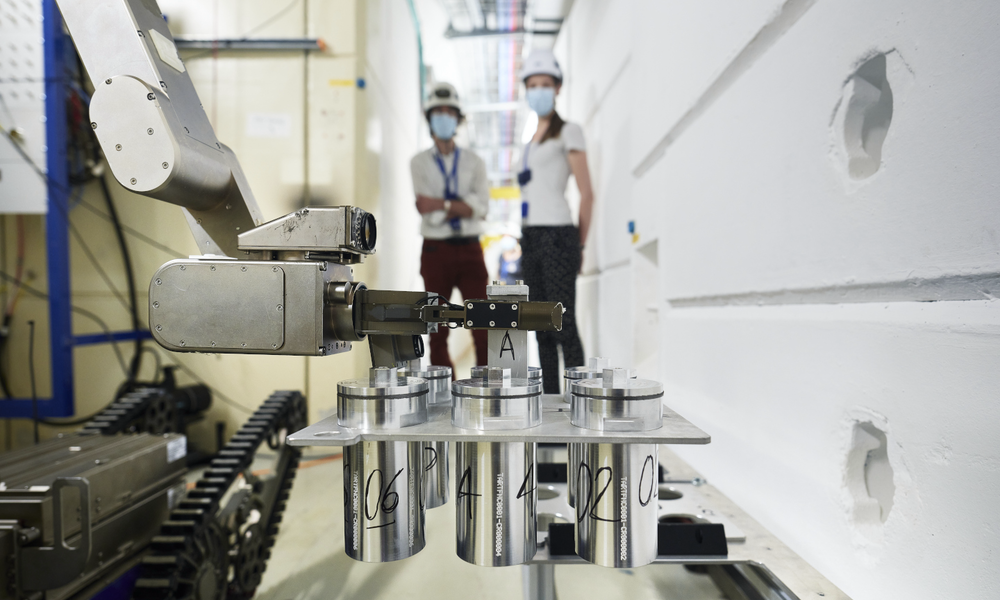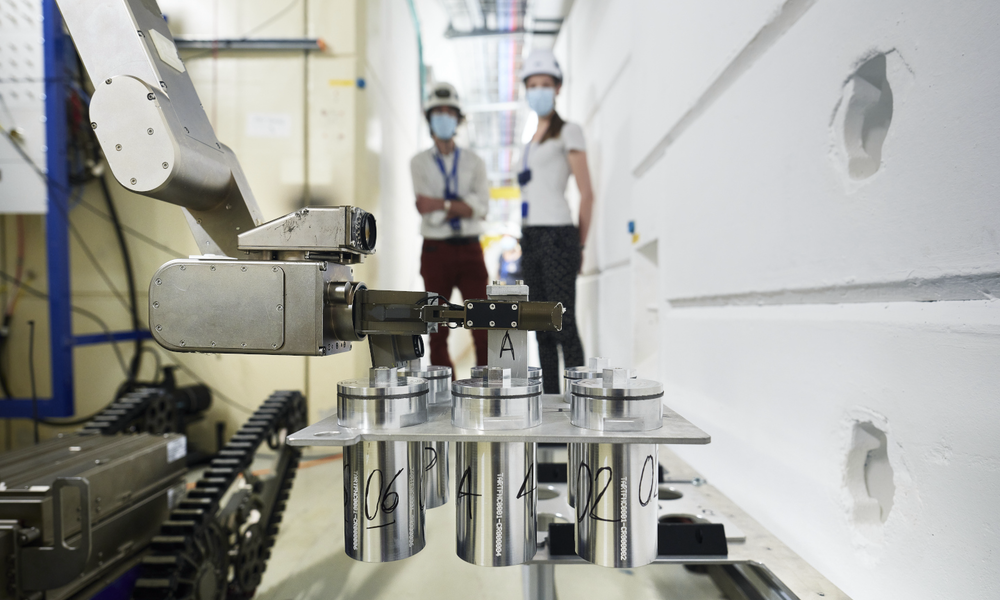New CERN Facility Allows Study of Radiation Damage to Materials
Earlier this year, a water pipe in CERN’s accelerator complex sprung a huge leak. It shut down a large section of CERN for several days, as tens of liters per hour poured out of the pipes. CERN’s scientists weren’t sure why the leak had developed. But they hypothesized that years prior, during routine maintenance, they may have accidentally installed a gasket made of Teflon, a material known to degrade in radiative environments. On inspection, that hypothesis was confirmed, says CERN physicist Marco Calviani. The Teflon gasket “had been destroyed.”
For Calviani, the mistake highlights the importance of carefully selecting the materials used in accelerators, a process that requires a better understanding of how different materials respond to intense levels of radiation. Now he and others at CERN have installed an experimental setup at the laboratory to investigate this issue [1].
The setup, known as the NEAR irradiation station, lives at CERN’s neutron time-of-flight (n_TOF) facility. There, scientists study how nonmetallic materials degrade when bombarded with neutrons (metallic materials require higher energy neutrons than those currently produced at n_TOF). When neutrons collide with a nonmetallic material, they can rip apart bonds between the material’s atoms, changing the material’s macroscopic properties. These changes can be dramatic, says Matteo Ferrari, who works with Calviani. Gaskets crack, lubricants liquify and migrate to other locations, and, as seen with the water-pipe leak, whole systems can fail.
The irradiation station uses neutrons produced at n_TOF. Two rows of 12 hollow aluminum cylinders, each containing a material sample, sit next to the beamline. Also next to the beamline are eight dosimeters that are used to track each sample’s radiation dose. Because of the high levels of radiation at n_TOF, the facility is permanently off limits to people. So to swap out samples, Calviani and his colleagues use robots.
In July 2021, the team loaded the first samples of industrial lubricants and O-rings. After several months of blasting the materials with neutrons, Calviani and his colleagues had the robots remove the materials, and last November they began studying the samples’ molecular structures and behavioral properties.
The analyses are still underway, but Ferrari says it looks like this first run has uncovered new information about how these materials degrade that calls for further investigation. But even without those findings, the team already considers the test run a success given that all the aspects of the experiments worked according to plan.
The neutron-degradation setup complements existing experiments that are used to study how gamma radiation deteriorates materials. Ferrari says that little is known about how these different sources separately affect materials. While the gamma radiation studies are important in telling us about the unique effects of gamma rays, which penetrate materials and interact with nuclei differently than neutrons do, the energies of the neutrons at n_TOF perfectly represent the energies of particles used in accelerator experiments.
“Assessing the durability of materials in these radiation environments is very, very important,” says Fulvia Pilat, the director of the Spallation Neutron Source at Oak Ridge National Laboratory in Tennessee. Pilat thinks that these experiments could inform material use beyond accelerator facilities, for example, in the extreme environments of outer space or in nuclear fusion facilities. Our experiments could really help future projects to design setups without “committing huge mistakes,” Ferrari says.
–Katie McCormick
Katie McCormick is a freelance science writer based in Sacramento, California.
References
- M. Ferrari et al. (n_TOF Collaboration), “Design development and implementation of an irradiation station at the neutron time-of-flight facility at CERN,” Phys. Rev. Accel. Beams 25, 103001 (2022).





